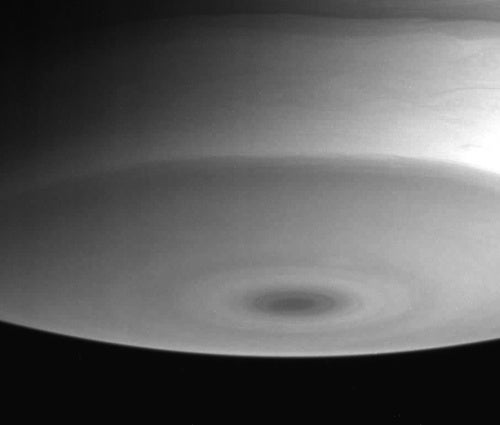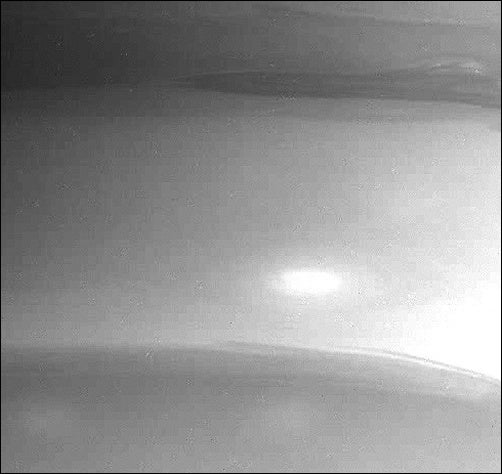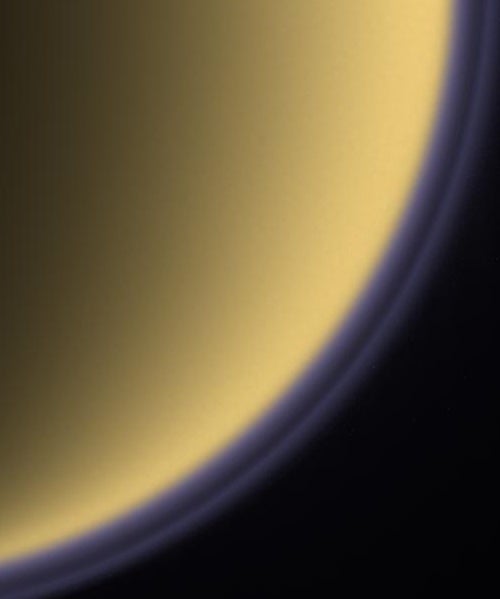Cassini bagged its first major discovery just one month into the start of the spacecraft’s 4-year-long exploration of Saturn and its moons. NASA scientists announced last week that Saturn’s radiation belts extend much closer to the planet than previously thought, a revelation that Cassini imaging team member Donald Mitchell of Johns Hopkins University called a “huge surprise.”
“This new radiation belt had eluded detection by any of the spacecraft that previously visited Saturn,” said Mitchell. “With its discovery, we have seen something that we did not expect, that radiation belt particles can ‘hop’ over obstructions like Saturn’s rings without being absorbed by the rings in the process.”
Twenty years ago, Voyager detected lightning, too. But it came from a single extended storm system growling in Saturn’s low latitudes. The storm lasted for months, regularly sparking lightning in a pattern that changed little from day to day. For Cassini, lightning is much more intermittent and, scientists think, may stem from storms of shorter duration occurring at the planet’s middle and high latitudes.
Why the difference in storm characteristics? When Voyager passed Saturn, the rings cast a shadow near Saturn’s equator, creating a cool band that cut through the planet’s warmest zone. The proximity of hot and cool air masses may have prompted large, long-lived storms to form in Saturn’s equatorial region. In contrast, Cassini has arrived during Saturn’s southern hemisphere summer. Now, the shadow of the rings drapes over much of the northern hemisphere, diffusing any sharp temperature contrasts.
Late last month, Cassini revealed a view of Titan from another end of the spectrum. Imaging in the ultraviolet, the spacecraft found two distinct layers of haze, providing scientists with another puzzle. Titan’s dense atmosphere — which is mostly nitrogen with a few percent methane — forms haze particles in the presence of ultraviolet light. Scientists believe the process begins in the high atmosphere, at altitudes above 250 miles (400 kilometers), where ultraviolet light breaks down methane and nitrogen molecules. The byproducts probably react to form complex organic molecules that combine into the small haze particles.
Why two haze layers have formed, say scientists, is a mystery they hope Cassini will help them solve.












